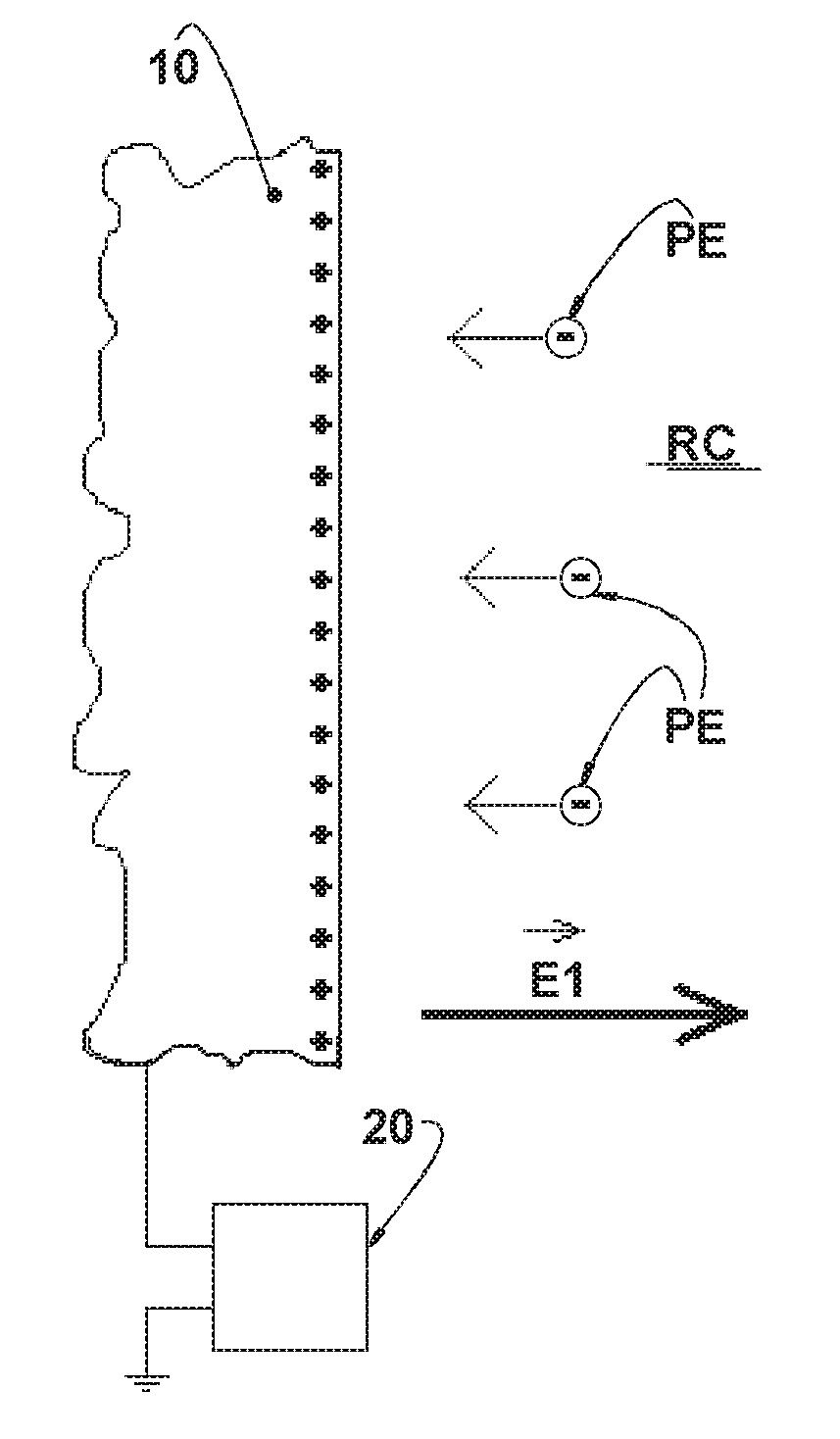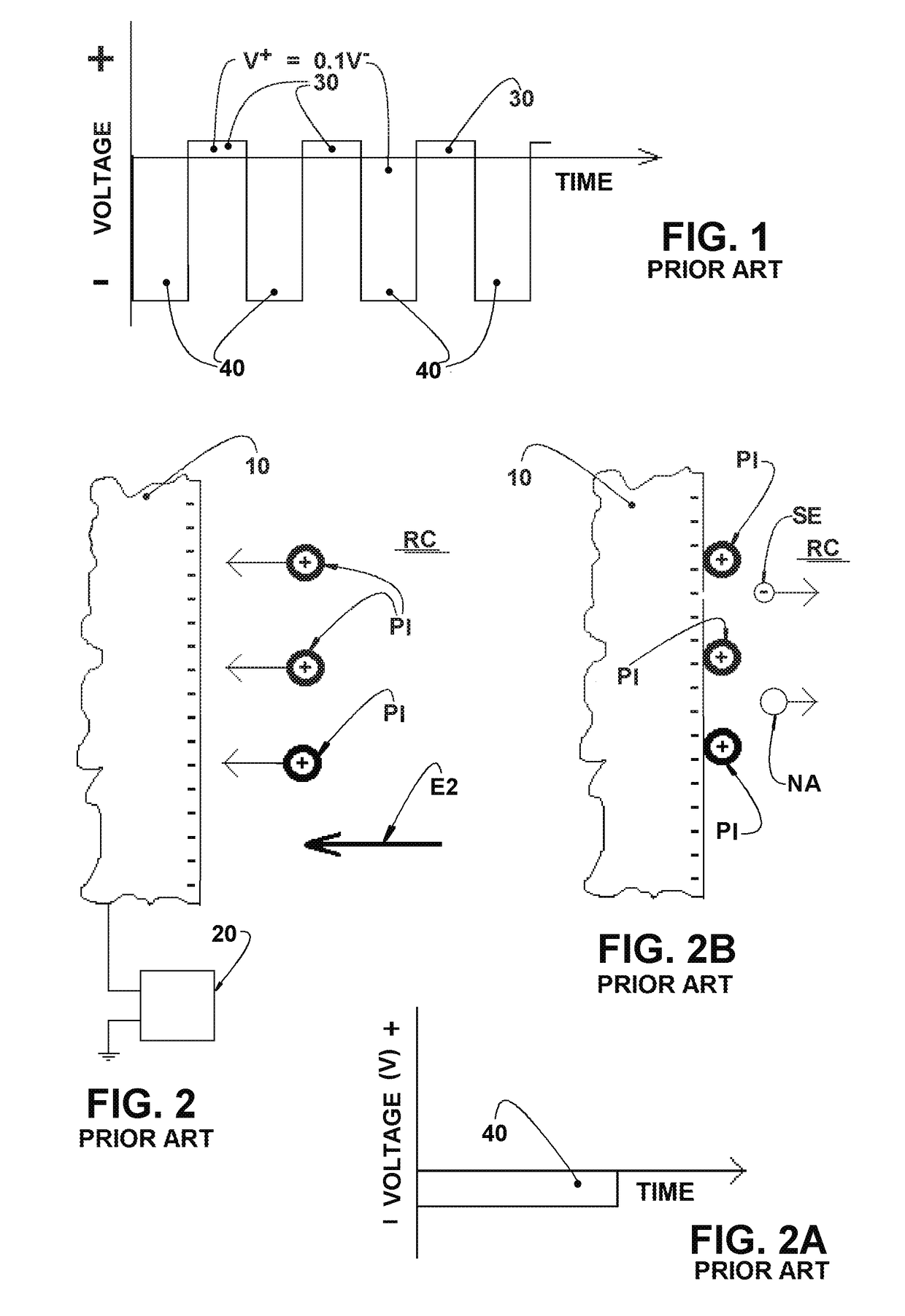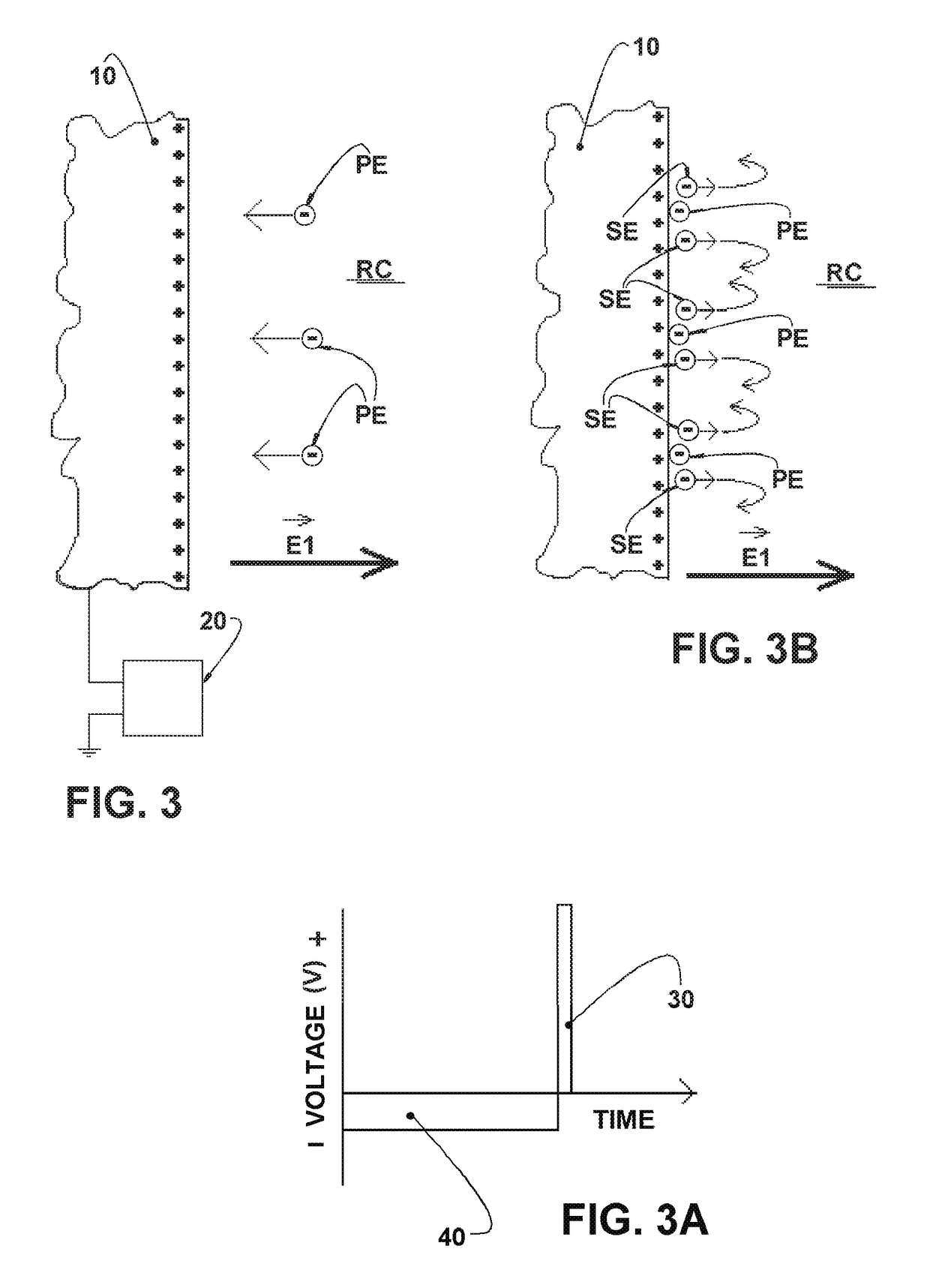Plasma densification method
a plasma and densification technology, applied in plasma techniques, electrical equipment, electric discharge tubes, etc., can solve problems such as inefficiency, damage to parts and electric power supplies, and voltaic arcs that may occur, and achieve higher densification of plasma, avoid voltaic arc production, and increase the production of secondary electrons
- Summary
- Abstract
- Description
- Claims
- Application Information
AI Technical Summary
Benefits of technology
Problems solved by technology
Method used
Image
Examples
Embodiment Construction
[0039]As already discussed previously, the present invention relates to a novel method for increasing the density of a plasma, generally, but not necessarily, formed within a normally grounded reaction chamber RC and in which a mass of ionized elements, with a region of luminescence and including neutral atoms NA of an ionizable fluid in the gas or liquid phase and primary electrons PE and positive ions PI formed in an initial phase or in a starting ionization phase of the ionizable fluid within the reaction chamber RC of a suitable reactor (not shown). It should be understood that the electrodes may or not be contained in a reaction chamber RC, and if contained, one of the electrodes may or may not be defined by the wall (not shown) of said reaction chamber RC.
[0040]In brief, the method consists of controlling the waveform of the voltage applied to the electrodes and, consequently, controlling the energy and the intensity of secondary electrons SE, that will be described further. T...
PUM
 Login to View More
Login to View More Abstract
Description
Claims
Application Information
 Login to View More
Login to View More - R&D
- Intellectual Property
- Life Sciences
- Materials
- Tech Scout
- Unparalleled Data Quality
- Higher Quality Content
- 60% Fewer Hallucinations
Browse by: Latest US Patents, China's latest patents, Technical Efficacy Thesaurus, Application Domain, Technology Topic, Popular Technical Reports.
© 2025 PatSnap. All rights reserved.Legal|Privacy policy|Modern Slavery Act Transparency Statement|Sitemap|About US| Contact US: help@patsnap.com



